
Introducing plant biology graduate students to a culture of mental well‐being (Plant Direct)
Plant Science Research WeeklyGraduate studies are challenging times, fraught with uncertainty and stress. Dewa et al. addressed this problem head on by developing a required, credited course for first-year graduate students, “Tools for Becoming a Successful Professional and for Enhancing Your Well‐Being and Work Environment”.…
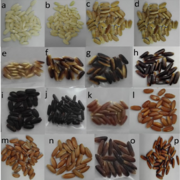
Review: The genetic basis and nutritional benefits of pigmented rice (Frontiers Genetics)
Plant Science Research WeeklyPigmented rice varieties are those in which a pigment is deposited in the bran, the outer layer of the grain. The pigment can be from brown to red (proanthocyanidins) or from purple to black (anthocyanins). In the course of domestication, humans have selected against the genetic factors responsible for…
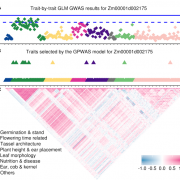
Genome-phenome wide association in maize and Arabidopsis identifies a common molecular and evolutionary signature (Mol. Plant)
Plant Science Research WeeklyGenome-wide association studies (GWAS) are widely used to link natural genetic variation to trait variation, with a single or a select few correlated traits assessed. High-throughput phenotyping allows the scoring of hundreds of individuals for various traits at several time points. An undeniable consequence…

Versatile auto-luminescent luciferase-based reporters for spatiotemporal gene expression studies (eLIFE)
Plant Science Research WeeklyFirefly luciferase constructs are extensively used for gene expression studies but require a reaction with an exogenous substrate, so expression to some extent reflects tissue penetrance. Khakhar et al. designed customizable auto-luminescence constructs based on a fungal bioluminescence pathway (FBP)…
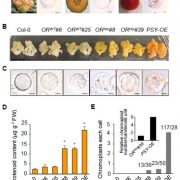
A natural variant of ORANGE interacts with plastid division factor ARC3 to regulate chromoplast number and carotenoid accumulation (Mol. Plant)
Plant Science Research WeeklySome “superfoods” have high nutritional value due to the presence of carotenoids, which prevent degenerative diseases like cancer. In plants, these pigments are biosynthesized and stored by plastid organelles called chromoplasts. Chromoplast number and size define total carotenoid accumulation. ORHis,…
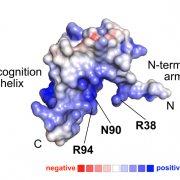
Structural basis for WUSCHEL binding (bioRxiv)
Plant Science Research WeeklyThe transcription factor WUSCHEL (WUS) plays a central role in organization of the shoot meristem. The three-helix bundle homeodomain in WUS can bind to several distinct DNA sequence motifs in many target genes promoters, but a structural view of these binding events has been lacking. Here Sloan et al.…
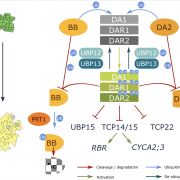
Deubiquitinating enzymes UBP12, 13 are antagonistic to E3 ligases BIG BROTHER and DA2 (eLIFE)
Plant Science Research WeeklyPost-translation modifications like ubiquitination and deubiquitination are important to maintain protein homeostasis and in turn plant growth. DA1, and DA1-RELATED PROTEIN 1, 2 (DAR1, DAR2) are latent peptidases activated upon ubiquitination by E3 ligases BIG BROTHER (BB) and DA2. In this paper, Vanhaeren…

Newly identified miRNAs may contribute to aerenchyma formation in sugarcane roots (Plant Direct)
Plant Science Research WeeklySugarcane is one of the major crops for sugar and ethanol production and has been successfully used for first generation ethanol production through sucrose fermentation, but second generation ethanol production, through cell wall depolymerization, is still limited. Aerenchyma formation in sugarcane root…
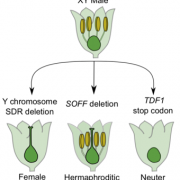
Sex chromosome evolution in asparagus (Plant Cell)
Plant Science Research WeeklySeparation of male and female flowers on different individuals, called dioecy, has evolved independently many times in flowering plants from hermaphroditic ancestors. A long-standing theory predicts that specialized X and Y sex chromosomes can evolve in dioecious species when mutations occur in two tightly…

